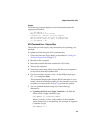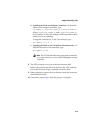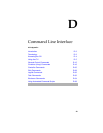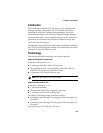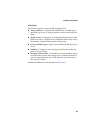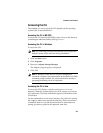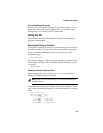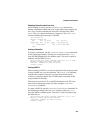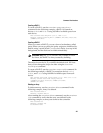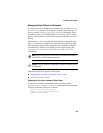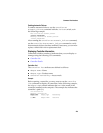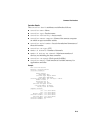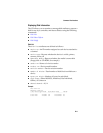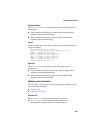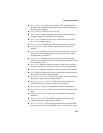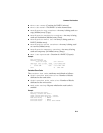
D-7
Command Line Interface
Creating a RAID 1
To create a RAID 1, use the
container
create
new_mirror
command. In the following example, a RAID 1 is created on
devices
0:02:0
and
0:03:0
using 100 MB of available space from
each device.
AAC0> container create new_mirror ((0,2,0), 100M) (0,3,0)
Executing: container create new_mirror ((CHANNEL=0,ID=2,LUN=0),104,857,600 )
(CHANNEL=0,ID=3,LUN=0)
Creating a RAID 5
When you create a RAID 5, you use a form of redundancy called
parity. When you set up parity, the parity stripes are initialized, by
default, using a scrub switch (
/scrub=TRUE
). Parity is set up in the
background, and the disks are available immediately.
Linux/UNIX only: The
/scrub
switch is not available in Linux.
For Linux, the RAID 5 is always created by building.
The stripe size can be 16, 32, or 64 KB; the default is 64 KB. Note
that you can change the stripe size later using the
container
reconfigure
command.
To create a RAID 5, use the
container
create
raid5
command. In
the following example, a RAID 5 is created on devices
0:01:0
,
0:02:0
, and
0:03:0
using 100 MB of available space from each
device:
AAC0> container create raid5 /stripe_size=64K ((0,1,0), 100M) (0,2,0) (0,3,0)
Executing: container create raid5 /stripe_size=65,536
((CHANNEL=0,ID=1,LUN=0),104,857,600) (CHANNEL=0,ID=2,LUN=0)
(CHANNEL=0,ID=3,LUN=0)
Deleting an Array
To delete an array, use the
container
delete
command. In the
following example, Array 0 is deleted.
AAC0> container delete 0
Executing: container delete 0
After running the
container
delete
command, use the
container
list
command to verify that the array was deleted. In the
following example, no arrays are found on the controller.
AAC0> container list
Executing: container list
No containers found.



